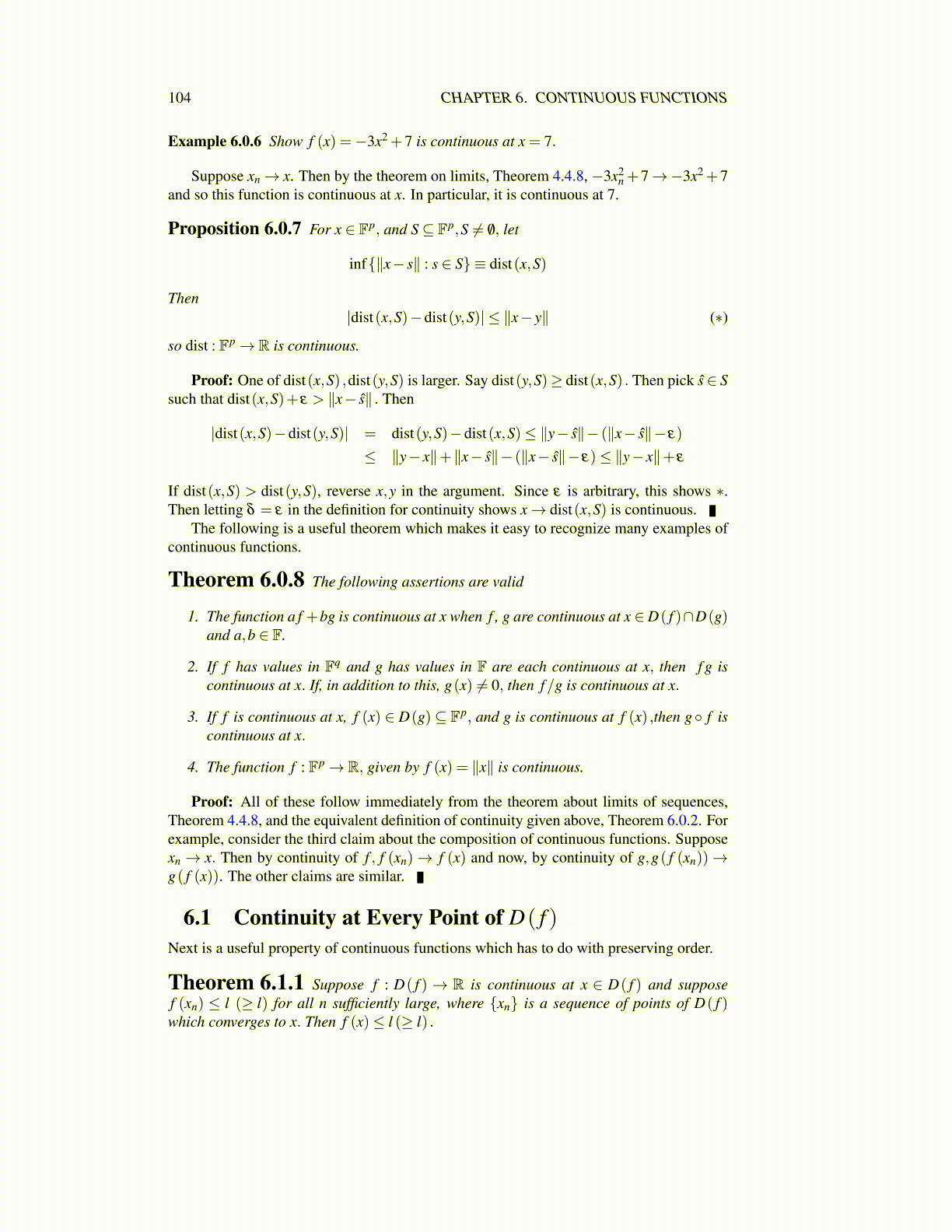
104 CHAPTER 6. CONTINUOUS FUNCTIONS
Show using the sequential version of continuity in Theorem 6.0.2 that f is discontin-uous at every point.
9. If x∈R, show there exists a sequence of rational numbers, {xn} such that xn→ x anda sequence of irrational numbers, {x′n} such that x′n→ x. Now consider the followingfunction.
f (x) ={
x if x is rational0 if x is irrational .
Show using the sequential version of continuity in Theorem 6.0.2 that f is continuousat 0 and nowhere else.
10. Suppose y is irrational and yn→ y where yn is rational. Say yn = pn/qn. Show thatlimn→∞ qn = ∞. Now consider the function
f (x)≡{
0 if x is irrational1q if x = p
q where the fraction is in lowest terms
Show that f is continuous at each irrational number and discontinuous at everynonzero rational number.
11. Suppose f is a function defined on R. Define
ωδ f (x)≡ sup{| f (y)− f (z)| : y,z ∈ B(x,δ )}
Note that these are decreasing in δ . Let ω f (x) ≡ infδ>0 ωδ f (x) . Explain why f iscontinuous at x if and only if ω f (x) = 0. Next show that
{x : ω f (x) = 0}= ∩∞m=1∪∞
n=1
{x : ω(1/n) f (x)<
1m
}Now show that ∪∞
n=1{
x : ω(1/n) f (x)< 1m
}is an open set. Explain why the set of
points where f is continuous must always be a Gδ set. Recall that a Gδ set is thecountable intersection of open sets.
12. Show that the set of rational numbers is not a Gδ set. That is, there is no sequenceof open sets whose intersection is the rational numbers. Extend to show that nocountable dense set can be Gδ . Using Problem 11, show that there is no functionwhich is continuous at a countable dense set of numbers but discontinuous at everyother number.
13. Use the sequential definition of continuity described above to give an easy proof ofTheorem 6.0.8.
14. Let f (x) =√
x show f is continuous at every value of x in its domain. For now,assume
√x exists for all positive x. Hint: You might want to make use of the identity,√
x−√y = x−y√x+√
y at some point in your argument.
15. Using Theorem 6.0.8, show all polynomials are continuous and that a rational func-tion is continuous at every point of its domain. Hint: First show the function given asf (x) = x is continuous and then use the Theorem 6.0.8. What about the case wherex can be in F? Does the same conclusion hold?